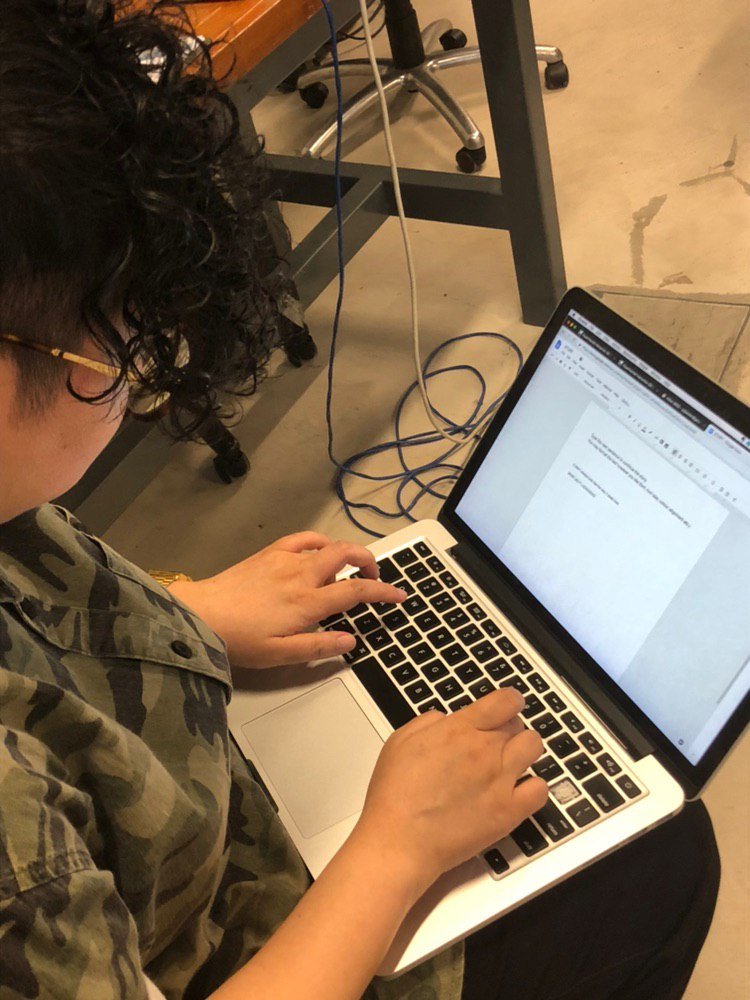What is the content of the work and who is creating it?
This is a continuous narrative told by various random individuals who contributed to the storytelling by writing one sentence each; in other words, this is a form of open-source storytelling.
Just like an open-source software, like Gimp, this form of storytelling acted as a space for individuals to craft and dictate how a narrative unfolds. However, a scaffold had to be first set in place in the form of instructions and the first sentence which suggests the setting. Participants contribute to the narrative by continuing the story with a sentence. Hence, although the work was first created by Gwen and I, the essence of the work was created through the collaborative efforts of the public, giving the public due ownership.

Where does this work take place?
This work takes place online, on a Google document. Since this was a Google document that was made public, anyone on the internet could access the document, regardless of their possession of a Google account.


How does this work involve social interaction?
The work involves social interaction between individuals online. With a semblance of continuity in the narrative, participants had to collaborate or at the very least, consider the content of the previous participants so as to keep up with the storyline.

How is your crowd-sourced project different from one that is created by a single artist/creator?
This crowd-sourced project is different than if it were created solely by one artist as it took on many turns and turned out nothing like what Gwen and I (the initial creators) had thought it would. Since it was open to the discretion of the individuals to dictate the narrative, their idiosyncratic thought pattern, humour and decision making were all part of the process of crafting the next sentence.
I noticed this especially when one participant assumably, from business (she was sporting the business faculty shirt) seemed to have struggled to continue the narrative as the storyline got absurd at that point. She broke the fantasy chain and wrote that “Imagination isn’t real” instead. This was a stark difference from the whimsical and ridiculous sentences that came before and after, mostly written by ADM students. This reminds me that an interaction piece, if received by a wide array of individuals, would render differing perspectives and responses. This reflects also, the social behaviours of different strata of people or personalities.

The story also took on a very bold leap after Shrek appeared which embolden the rest to add on the incongruity and silliness of the narrative. This instance of herd mentality reveals to me that an interaction piece could strive to push beyond the social boundaries or to break social codes, so as to deeply engage my audience with my art.


